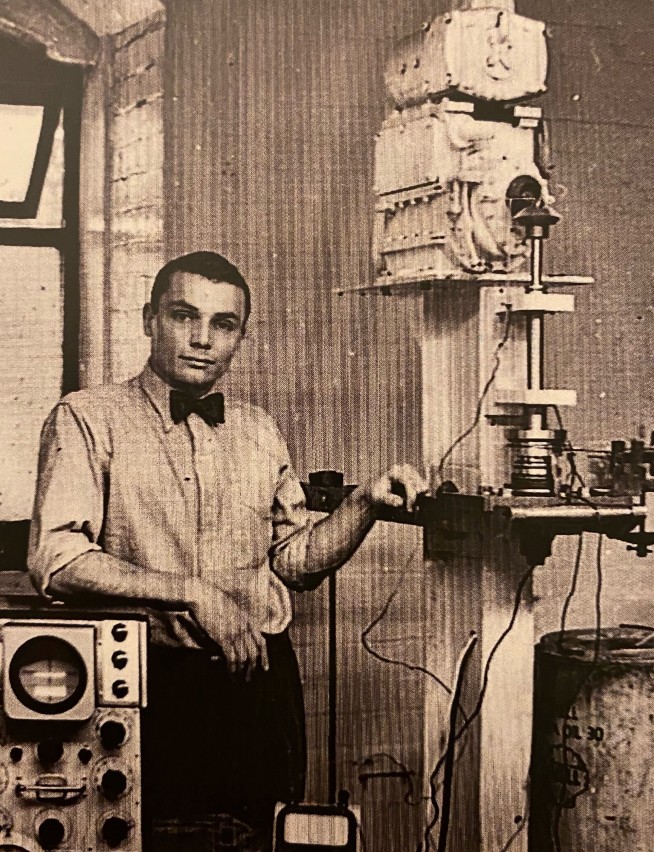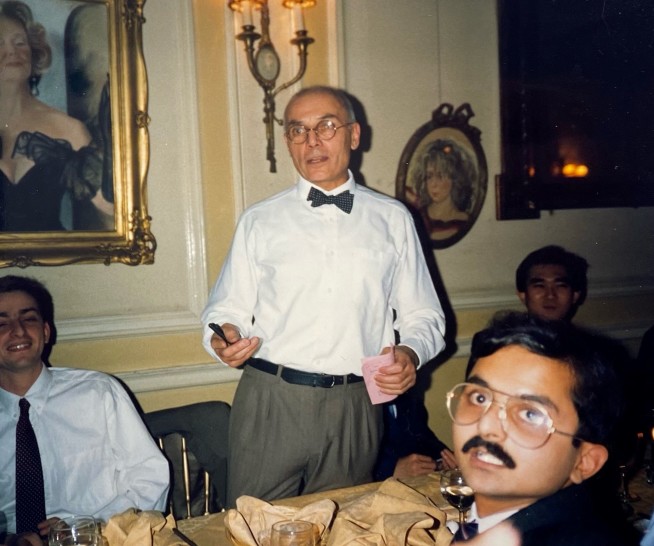Ricardo Martinez-Botas and Hugh Spikes pay tribute to Dr Ramsey Gohar who passed away on March 13th 2021:
Modesty and kindness were his most striking characteristics along with his remarkable talent.
Son and grandson of Egyptian medical doctors, he was born in 1928 at UCL Hospital in London, where his father was practicing.

The family moved to Egypt when he was 5. He went to a Montessori school and then to the English school in Cairo. At the end of WW2 he moved back to London. He was full of stories and anecdotes of those early years in Egypt and carried that ability to tell stories into his teaching career.
Ramsey graduated from the Regent Street Polytechnic in 1951 with an external B.Eng. degree from the University of London, and then gained practical training as a graduate apprentice with Messrs D. Napier and Sons in Acton, where he worked on the Deltic diesel engine and the Eland aero gas turbine. After national service with the Corps of Royal Electrical & Mechanical Engineers, from 1956 to 1958 he was employed at the General Electric Co. Research Laboratories in Stanmore as an electromechanical development engineer, specialising in gyroscopes. This included a placement in Dr Alastair Cameron’s newly founded Lubrication Laboratory at Imperial College where he gained a DIC on the topic The Lubrication of Spheres.
Academia beckoned and after a year acting as a Demonstrator in Mechanics at INSA de Lyon (now renowned for its Tribology research), in 1960 he obtained a Lectureship in Engineering at the Regent Street Polytechnic. Here, while a Lecturer and later Senior Lecturer, Ramsey also carried out PhD research part time at Imperial College supervised by Dr Cameron, and in 1966 he gained his PhD with the thesis; Oil Films Under Elastohydrodynamic Conditions. He published his first paper with Dr Cameron in 1963 in Nature entitled Optical Measurement of Oil Films Under E.H.L.
Ramsey was appointed a Lecturer in our Mechanical Engineering Department in 1966, where he remained to serve the Department as teacher and researcher for the rest of his life. He taught a wide range of subjects including Mechanics, Tribology, Rigid Body Dynamics and Mechanism Synthesis. He discovered the love of the river; much of the early time at Imperial he spent of the river Thames on the College rowing eights, he had the ability to combine work and sports, what an example. He never ceased to swim and was often seen in the serpentine in Hyde Park for most of his career, no matter the weather or conditions!
At Imperial College he was MSc course director in the Department of Mechanical Engineering for around 20 years, he was central to many MSc students to launch their careers. A generation of MSc students remember his encouragement and support with gratitude. A colleague from his early PhD days, Dr Vern Wedeven writes;
A first encounter with Dr. Ramsey Gohar always assured an immediate friendship. If he were your senior in academics or research, he would humbly position himself as your equal and admired companion. He questioned his own thoughts and understanding as a maneuver to strike up a dialog so you could journey through the science, thoughts and logic together. This was his way of delivering instruction without elevating himself as a superior instructor.
In the world of Tribology Ramsey will always be remembered for his outstanding, and in several areas, seminal research in Lubrication. To this research he brought a unique combination of practicality and analytical rigour. A contemporary, Professor Chris Ettles describes the beginning of his PhD research in 1962;
I'll always remember the occasion when he came into the lab in January carrying a small cardboard box, saying he'd made his Ph.D. equipment in his kitchen during the Christmas holidays. This was his ball-on-plate optical rig, using crown glass and white light. He published his work in the Royal, together with Alastair. Quite a feat.
This PhD work, where Ramsey first applied optical interferometry to measure and map thin lubricant films in high pressure contacts, was to become key to our understanding of elastohydrodynamic lubrication; it showed experimentally for the first time how rolling bearings and gears can operate for long periods without seizure. Today, commercial instruments to measure oil film thickness based on his research are available and used globally as routine tools in lubricant design, as well as for research on lubricant rheology.

Ramsey went on to apply his experimental and analytical skills to many other aspects of lubrication, including rolling element bearing design, bearing vibration, and, in the 1990s, gas bearings. All this work was original and of both fundamental and practical importance. A later colleague, Professor Andy Olver remembers an occasion in 1985 when Ramsay presented the first measurements of pressure in an impacting lubricated contact;
My strongest memory of him is listening to his presentation in Lyon of his results from dropping the ball on to the micro-transducer. The audience gave an audible gasp, with a mixture of astonishment and recognition, when he revealed the pressure-time history of the rebound, showing a perfect EHL spike! I have never seen anyone create such a stir at a tribology conference!
In 1988 Ramsey summarised current understanding of elastohydrodynamic lubrication (much of it originating from his own research) in his book “Elastohydrodynamics”. This remains to the present day a key starting point for engineers concerned in the design of lubricated machine components.
Ramsey formally retired in 1993 but continued research in the Department, often carried out via Masters and visiting student projects. Ten years later on receiving the 2003 Donald Julius Groen prize of the IMechE he wrote, in typical Ramsey fashion;
I officially retired in 1993, but am still hanging around this wonderful place, being just about tolerated by most people there.
In 2002 he gained a DSc from the University of London.
Ramsey continued to explore new fields in tribology until 2010. In 2007 he collaborated with his nephew and colleague, Professor Ricardo Martinez-Botas to apply 3D CFD to the study the flow in a bearing. Ricardo jointly supervised students with him over many years, many of them were summer students from oversees, what care and dedication he showed to these young minds! In 2008 produced a second textbook with his former student, Professor Homer Rahnejat, “Fundamentals of Tribology”.
Ramsey was a type of academic who was less interested in raising and climbing and more interested in people and science. He had little interest in accolades and awards. His scientific contributions are truly outstanding, his interests were the pursuit of knowledge, in finding solutions to tricky engineering problems, and supporting the young engineers around him. He was unassuming, calm, and sensible, a port to go for advice. We remember him with his round glasses and a bow tie around the Department.
Ramsey died at the age of 92 on March 13th 2021 after an illness lasting several years. He will be remembered by many past students and colleagues with love and gratitude for his unstinting helpfulness and his unassuming kindness.